
Learn Percussion
Free trial on our course with traditional Brazilian references. Master Samba, Afoxé, Ijexá and more with expert instructors.
Start Learning
Brazil has one of the most culturally diverse cultures in the world. Brazilian Instruments fuel Candomblé, Capoeira, Samba, and many, many other traditional Cultural expressions.
If you’re a fan of Brazilian culture or just love the sound of traditional instruments like the Atabaque, Pandeiro, and Reco-Reco, you’ve come to the right place. We’ve created this comprehensive guide to help you navigate the world of Brazilian drums and percussive instruments.
We’re going to dive into the different types of drums used in traditional Brazilian music, such as Samba, Maracatu and Pagode, and take a closer look at some of the most common instruments.
To learn more about the history, and what instruments are used for what rhythms:
Whether you’re a seasoned percussionist or just starting out, understanding the unique rhythms and instruments of Brazilian music can be a challenge. To read up on Brazilian Rhythms, check our content:
Brazilian Rhythms Guide Samba Origins and History
Brazil is home to a rich and diverse musical culture, and the drums and percussive musical instruments play a crucial role in this tradition and passion for rhythm. From religious ceremonies to Rio de Janeiro-style Samba, drummers shape the Brazilian music heartbeat.
Here is a comprehensive list of the most common Drums and Instruments found in Brazilian Ground:

Source: Our Archives. Drums available on Our Shop!
Construction: Atabaque (from the Arabic Al-Tabaq – Lit. Plate), is a multi-ethnic drum born in Brazil. . They are made with wooden planks, and headed with goat and sometimes calf or cows skin. They can range from 10” to 14”, and their size varies greatly, some so low as to be hard to be played standing, some so high as to need a platform to be played.
They can be tuned in a variety of ways:
Culture: The Atabaque is played with the hands in Samba, Capoeira, Barravento and many other cultural expressions. In Candomblés Ketu and Jeje tradition the Rum is played with one Aguidavi stick and a free hand, and Rumpi and Lé with two sticks, which are called Aguidavi, typically made from Guava and other Plants branches.
In Candomblé, there are three Atabaque drums, and they constituted a pitch scale, from treble to bass: Lé Drum (Smallest Drum), Pi, or Rumpi Drum (Medium Sized Drum), and Rum Drum (Solo Phrases and Biggest Drum).
They are played in a wide variety of Afro-Brazilian cultural manifestations, being present as well in the vast majority of Terreiros.
The Atabaque is undoubtedly the most representative of Brazilian Instruments. There is much prejudice locally in Brazil, because of the prejudice for African-Based Spirituality, however, the Atabaque is undoubtedly being key in the development of Samba music, Capoeira, and other Brazilian Traditional Cultures stemming from Candomblé.
To learn more about Candomblé check our:
Candomblé Guide

Source: Leão Coroado Archives
Construction: Afro-Brazilian instrument, Goat skinned Dual headed drum, typically done with macaúba wood, with a wooden ring used for heading, tuned with PP or Sisal rope.
Culture: Instrument typical of the Pernambuco and Paraíba State, often associated with Maracatu and Samba de Coco cultural movements, where it is played together with the Agogô, Gonguê, and Ganzá, as well as Pandeiro in the Samba de Coco.
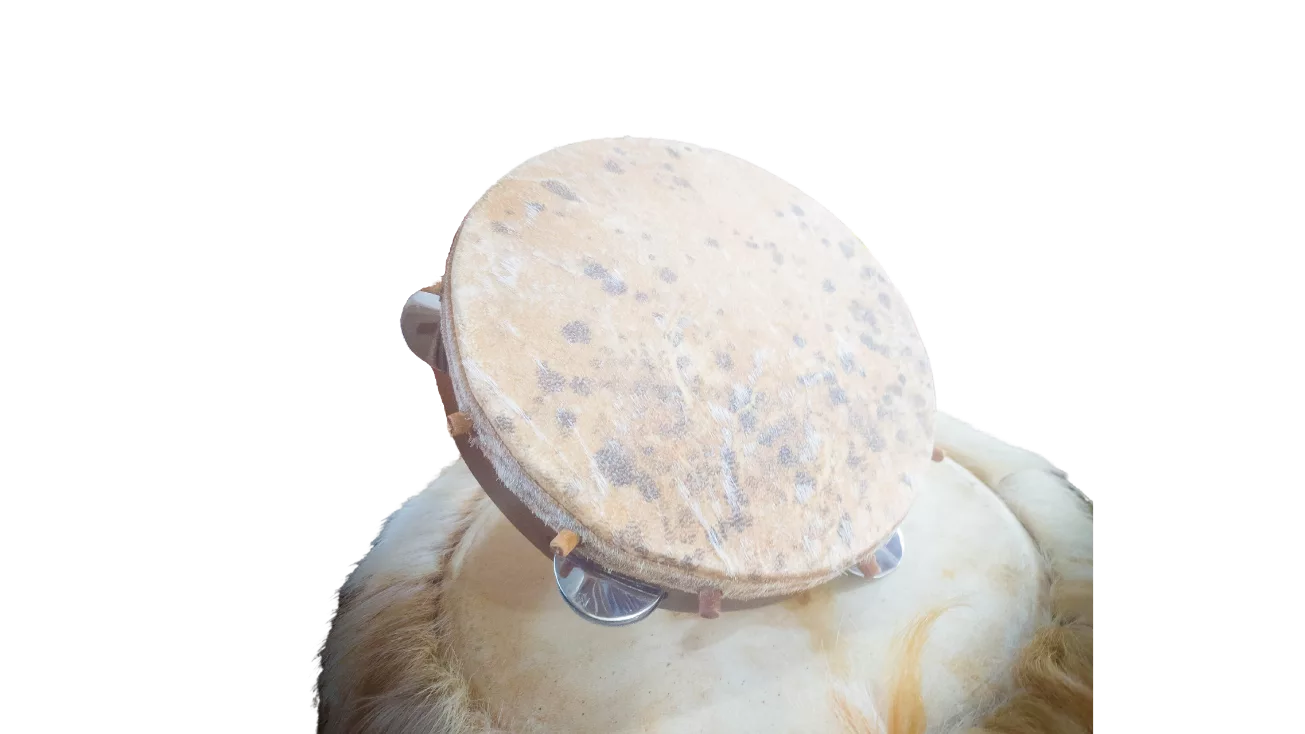
Construction: Round wood hand frame drum, weaved with holes for one line of jingles, covered with goat, calf, and contemporary instruments often use plastic skin.
Culture: Afro-Brazilian Instrument with origins in the North African Tambourine. Played in its original form in Brazil, with a slightly different construction, using only one set of metal jingles instead of two as in the Arabic instrument, and a handle for holding one end with a hand, used for shaking the jingles, while the other will produce sound tones directly from the drumhead.
Used in many different rhythms from various regions, from Samba, capoeira, and coco, to many more. A very versatile instrument.

Free trial on our course with traditional Brazilian references. Master Samba, Afoxé, Ijexá and more with expert instructors.
Start Learning
Immersive cultural travel packages with authentic festivals, dance classes, and exclusive access to Salvador's rich Afro-Brazilian heritage.
Explore Packages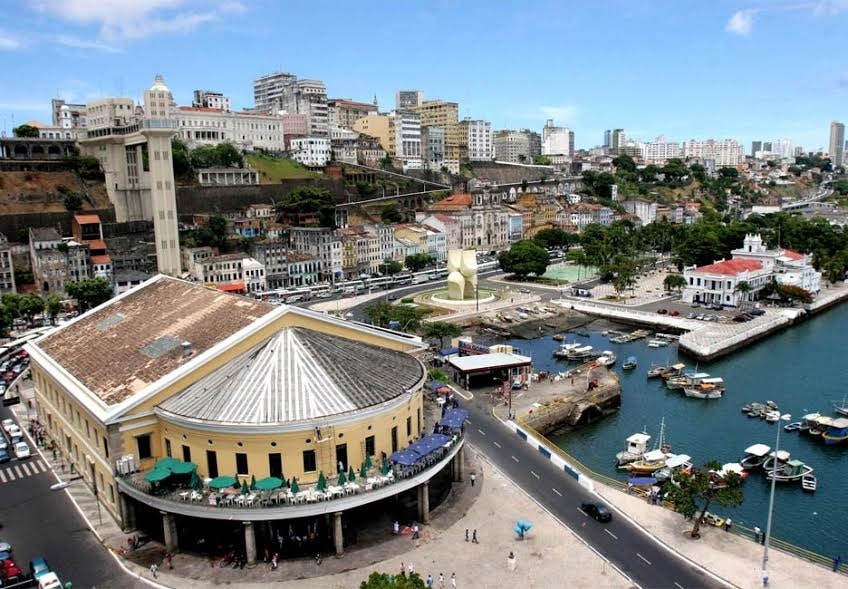
Browse authentic Brazilian percussion instruments. Atabaques, agogôs, pandeiros and more - shipped worldwide.
Browse Shop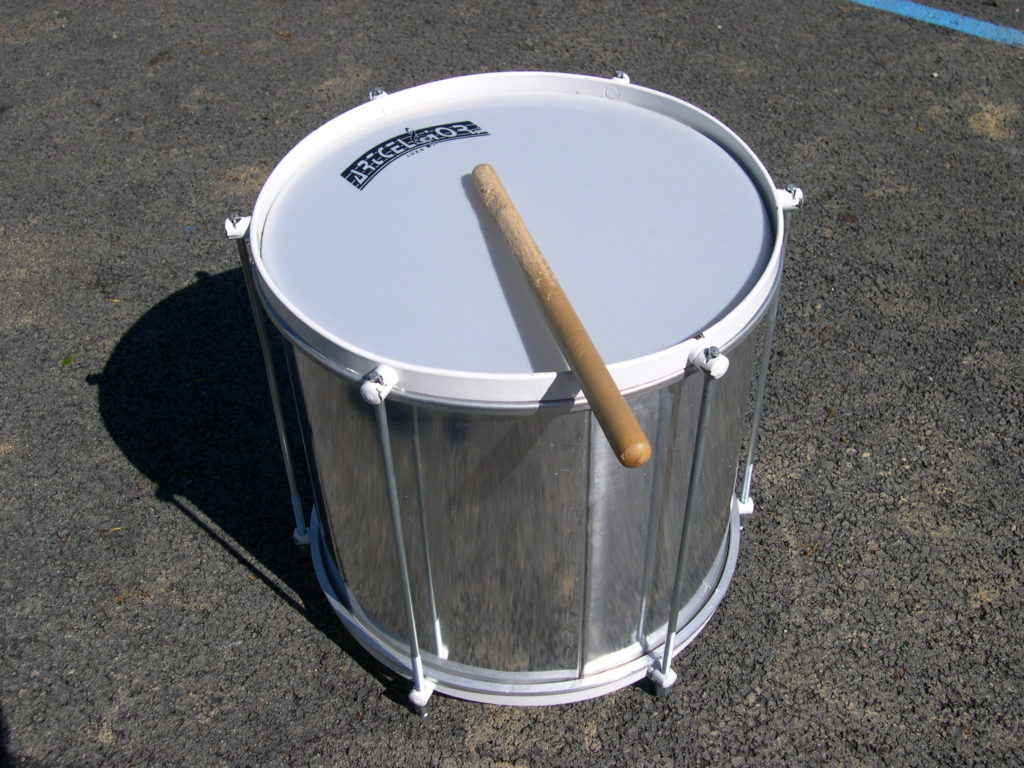
Culture: Instrument of unknown origins, possibly an adaptation of an American Drum set piece. There are some versions attributed to specific individuals, such as Timbalada for Bacurinha and Ubirany from Fundo de Quintal for Hand repique.
There are many different variations of the Repique or Repinique.
Construction: The first variation is the one most typically used in Salvador and Rio, the 10” and 12” shells, with dual plastic heads. The body of the instrument is typically made from stainless steel or aluminum.
Culture: In Salvador, it is typically played with two polyurethane sticks (previously vine sticks were used, but not anymore), a hallmark of Samba Reggae and modern Pagodão. In Rio, it is typically played with one wooden stick and hand, in the Escolas de Samba. In all instances, it is used often for solos, because of its loud and striking unique sound.
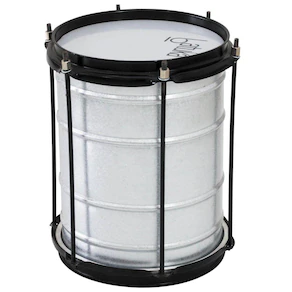
Source: CasasBahia
Construction: The bacurinha, a smaller version of the repique, with 8” and sometimes 6” plastic skins, is a higher pitch variant used primarily by Timbalada, and then was adopted by the Bahian Pagodão Bands. It’s one of the loudest instruments in Brazilian Percussion, idealized to play on processions.
Culture: The hand-Repique was adapted from the drumset Tom’s by Ubirany from Rio’s famous Samba group Fundo de Quintal. It became popular with Pagode players, used frequently for solos, rolls and transitions, because of it’s high-pitched sound. Used for Call and Response, it is played with the tip of fingers, having a lower volume Sound.
The ring-Repique is yet another variant of the Hand Repique, idealized by Mestre Dotô, in Rio, and used by Pagode groups, with one hand playing the skin and the other using percussion of a ring on the side of the drum for achieving the sounds wanted.
Construction: Timbal is a customarily 14” plastic-headed Drum, 3 feet or 90 cm tall, made of laminated wood, getting smaller in diameter at the bottom. It is a symbol of contemporary percussive music in Brazil, especially Bahian music.
Culture: There is a great controversy regarding how and when the Timbal was created. There are reports that in the 1960’s it was already used in Bahia. Some claim that is only the tam-tam drum turned upside down like the Atabaque and tuned more tightly. What is known is that the Samba Duro, which is a variation of the original Samba de Roda of the Reconcavo region in Bahia, that took form in Salvador, fueled the use of Timbal.

Junior, the Teach our Percussion Course, holding a wooden Timbal
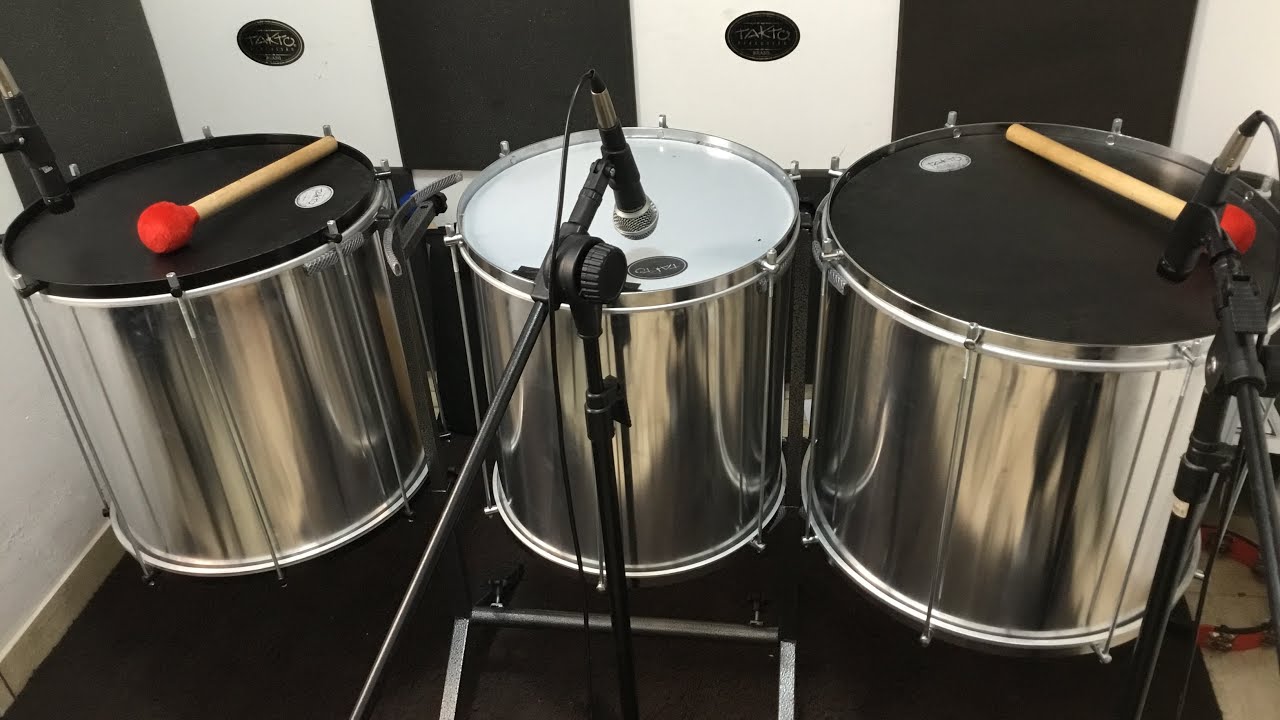
Source: Takto Youtube Channel
Culture: Instrument of unknown origin, possibly originating from Rio’s Samba Schools, with records of it being original done by Mestre Marçal with a butter tin, ring and goat skin.
Construction: Modern instruments are made of wood, typically using 16” to 24” inch skins, sometimes used with goat or calfskin for traditional ensembles, and using plastic skins in Samba Schools and Blocos Afro.
Culture: There are many variations of Surdo and many conventions on naming the Surdo’s. Samba Schools and Blocos Afro typically have 3 categories, each divided by pitch and skin size. The most common pattern is a higher-pitched 16” Surdo played in the upbeat, a medium tone 18” or 20” complementing the downbeat, and a deep bass 22” and 24” Surdo marking the 1st and 3rd beat.
With the development of the Trio Eletrico (Truck with stage on top) in Salvador, it became a necessity to condense the Surdo harmonies within a single instrument to save space. The Trio de Surdo was the instrument used to complement the beat, saving space and being played only by one person, who sometimes also plays a Repique or Bacurinha with another hand, especially common in Samba Reggae.
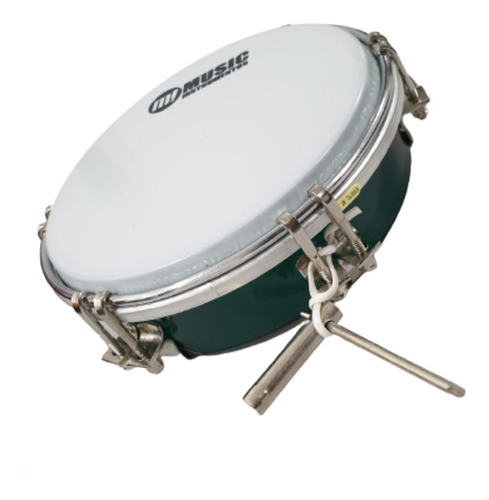
Source: M!music at Mercadolivre
Construction: The tamborim is a 5” to 6” handheld drum. It’s headed more often with plastic, but sometimes with goat or even snakeskin. The drum is often made of aluminum, or laminated wood, it’s played with a polyurethane single or branched stick. It has a piercing sound and generally occupies the highest pitch of the ensembles it integrates.
Culture: It is attributed to Mestre Marçal, one of his earliest creations. Center to Rio’s early Samba-Schools movements, such as Portela from as early as the 1920s, it became a staple for samba schools, as well as most variations of Rio’s Samba.
A symbolic citation of a Famous Classic Brazilian Musician Talking about Tamborim would be Jackson do Pandeiro Famous Song: Chiclete com Banana
“I’ll only add bebop to my samba, When Uncle Sam plays a Tamborim. When he gets to the Pandeiro and the Zabumba. When he learns, that Samba is not Rumba”

Source: Studio Version
Full Guide on Brazilian Samba/a>
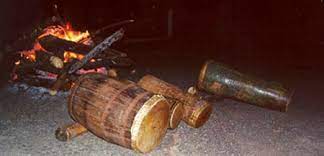
Source: IPHAN
Construction: Short Drum families, closely related to the Atabaque, it is believed that these families of drums started with the use of barrels headed with animal skin, while some used hollowed wood.
Culture: Funded within the South-East Afro-Brazilian Communities Jongo traditions are closely tied to the Bantu traditions, and Caxambu is considered by some to be a word that originated in the Bantu language meaning Music of the Drum. The Caxambu, sometimes referred to as Tambu, is played together with the Candongueiro and the Pwíta or Cuíca, another instrument of Bantu origins.
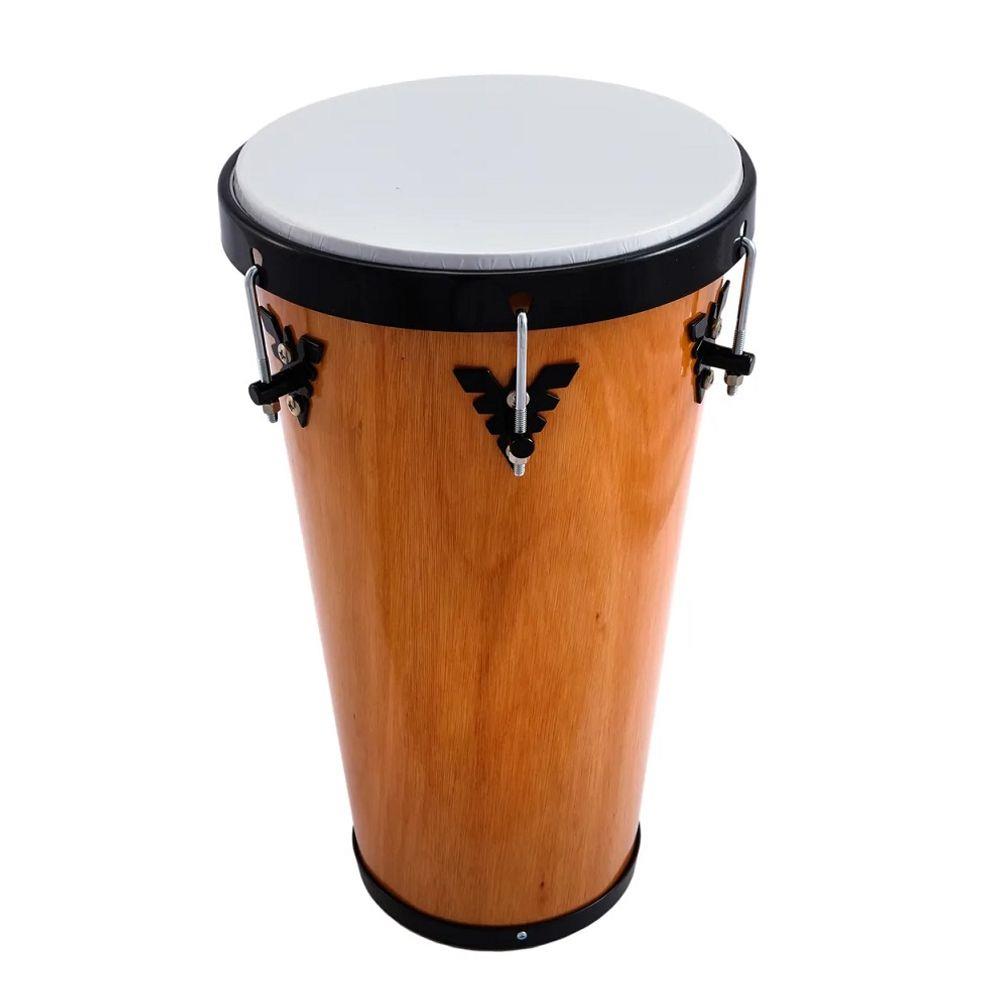
Source: PontoFrio
Construction: Drum made of a 12” to 14” plastic or sometimes nappa fabric (artificial leather) head, typically made of laminated wood.
Culture: Used by the Group Fundo de Quintal it became a staple in Rio’s Samba, marking the rhythms and doing breaks, it is played on the lap, one hand on the head and the other on the body. The head does the bass sounds, while the hand accompanies the treble variations.
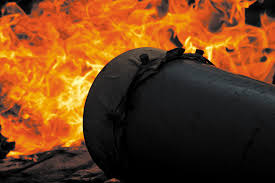
Source: Iphan
Construction: A hand-carved, hollowed wood drum which is still tuned by Fire. Similar to the Atabaque it has three typical sizes, going from smaller to very large. Headed with many varieties of animal skin as well.
Culture: In São Luis, The capital of the northern Maranhão State it is common to see fires being lit in the street, with many of the Tambor de Criolo drums being stacked at the side: This is a sign that there will soon be people playing and possibly dancing.
Repeating the three Drums patterns, the Smaller drum is called Crivador, the middle Meião, and the Biggest Rufador. While the two smaller drums make rhythm patterns, while the larger improvises according to the dance. There is also a unique element of a player who plays behind the long end of the Rufador drum player, playing on the shell of the drum with two sticks.
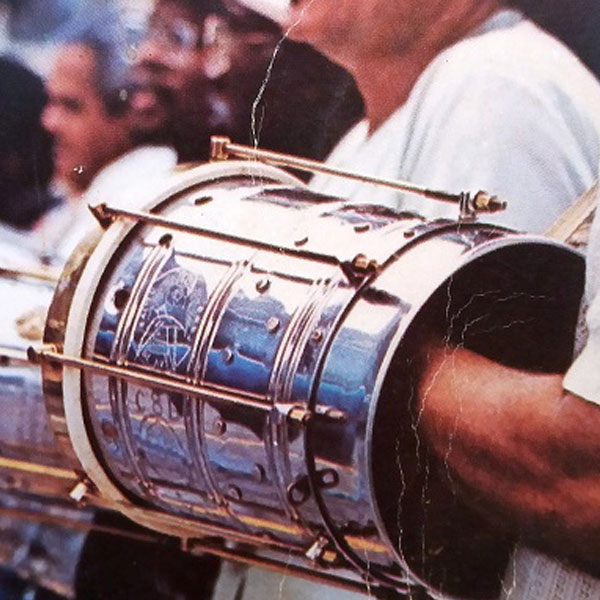
Instrument of Angolan or Bantu origins consisting of a small wooden, or metal body, a goat skin which has thin wood skin on the inside, that is bound to the leather skin through a fine rope. In Brazil, it was industrialized, with metal being used for the instrument’s body.
Culture: The instrument has a particular way of being played: when friction is applied with a wet handkerchief or rag on the wood protruding from the skin from inside the drum, Pitching an unique sound. The other hand is used to apply pressure to the skin, achieving a wide variety of tonalities according to the pressure.
It is often used in Solo in Samba of different varieties, being one of the percussive instruments with the widest tonal range.
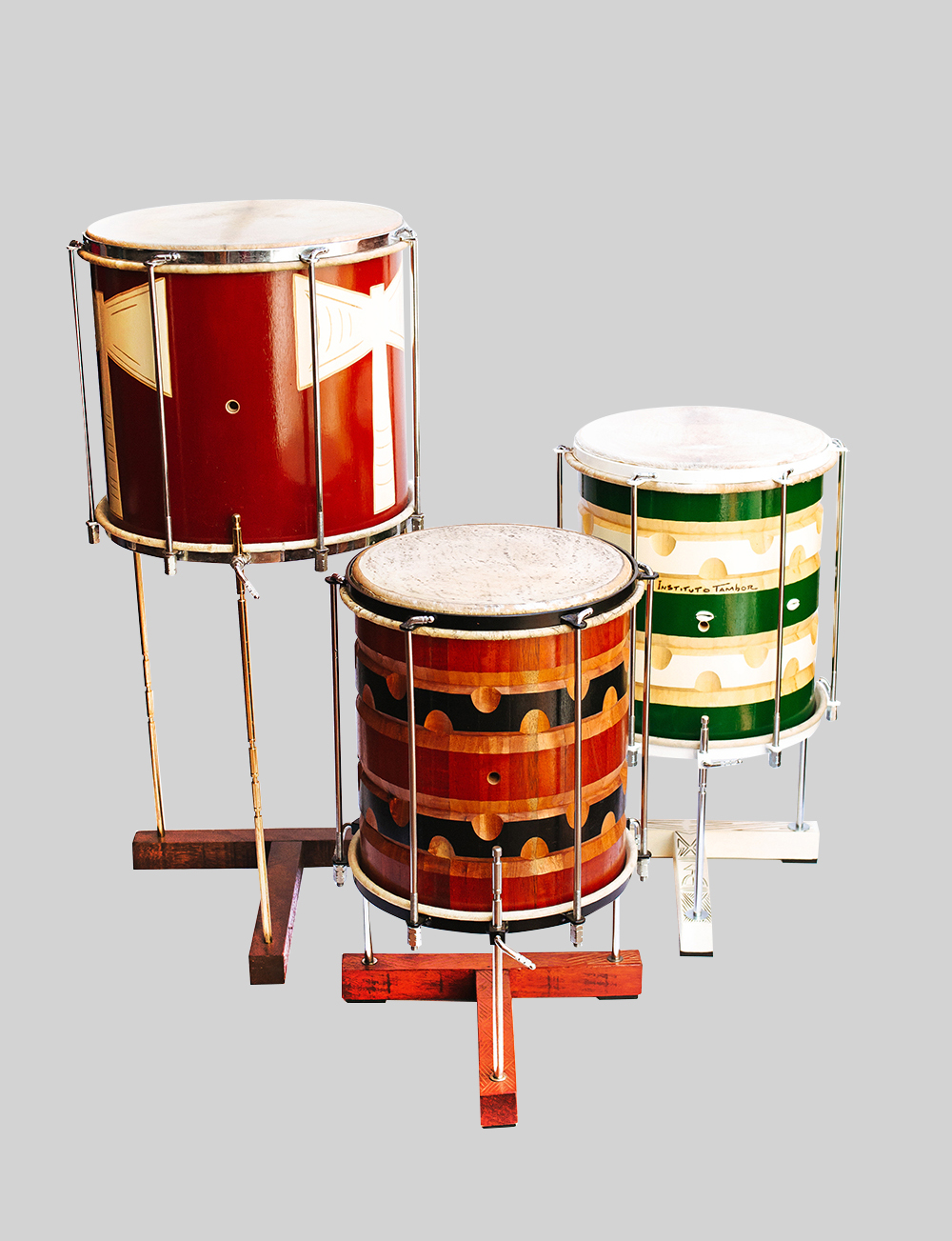
Source: InstitutoTambor.com.br
Construction: A small drum, held by metal supports, with a wooden body, made of leather and goatskin, traditional from Candomblé Nagô and Xambá Nations from Pernambuco. Comes in the traditional three-sized variations, all held with metal support in a crux format.
Usually played sitting down, because of their size, the Ilú is a drum traditionally used in Afro-Religions expressions common in the Pernambuco and Paraíba state, and follows the same pattern of Atabaque’s division in Candomblé, the smaller two used for patterns and the largest for improvisation.

Dona Aurinda do Prato – Photo by: @juliarodr.gues
Culture: The knife and Plate became a traditional instrument in the Samba-de-Roda traditions, with the sound of friction being a part of the origins of Samba.
Used possibly in order to reproduce the sound of the widespread Reco-Reco
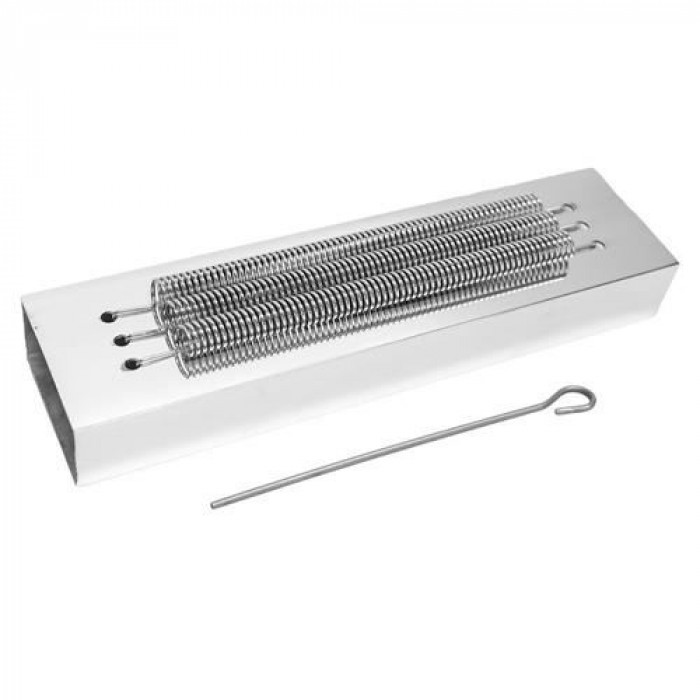
Source: Elomusical.com.br
Construction: Known by many names, and made with dozens of different materials, it is the mold of African friction instrument that in Brazil became industrialized, with metal materials used for its construction, and other native and foreign wooden materials used frequently.
Culture: Used in dozens of traditional cultural manifestations from the north, the northeast, and south regions, the reco-reco is a fundamental piece of many rhythms and is another form of African material culture in Brazil.
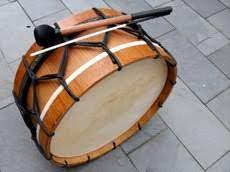
Source:UFPB University
Construction: A double-headed drum with dual plastic heads and a laminated wood body, tuned with metal gears. There is an artisan version which is built like the Alfaia, with some different dimensions. The traditional version uses wood, goatskin and ropes for tuning.
Culture: A key element in Forró’s Tradition, the Zabumba provides the swing for dancing, and preserves the original rhythms from north-eastern musical culture in Forró’s everchanging musicality. It’s played with a muffled stick on the top part, and with a thin stick on the bottom, usually called the bacalhau, which plays in the off-beat.
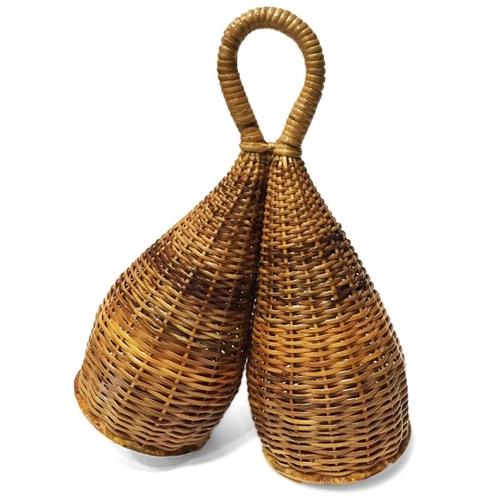
Caxixi
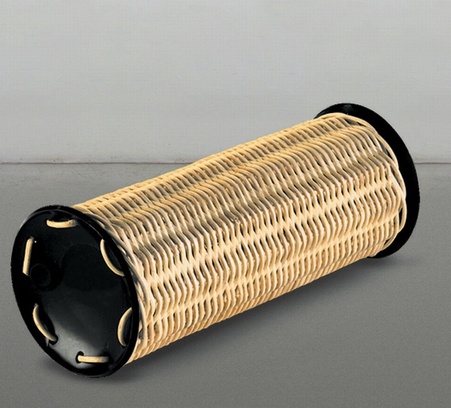
Ganzá
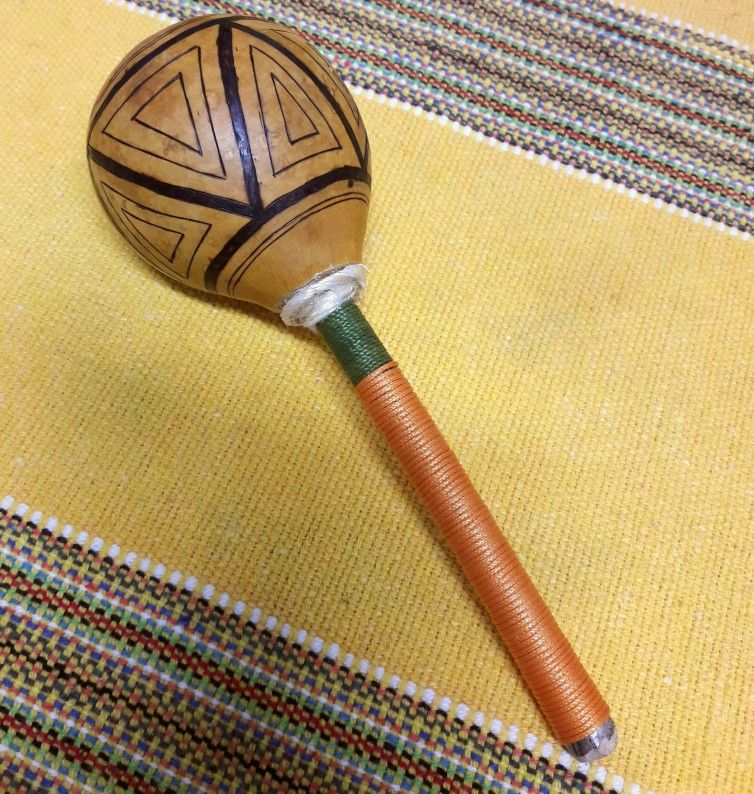
Maracá
Construction: Made of dozens of different materials, from seeds, plant fibers to metal-based, these are the main shakers of Brazilian Music.
Culture: Some are of African origins, such as the Caxixi and Ganzá, while the Maracá is known to be of Native indigenous origins. There are new variations that are believed to be hybrids, however, there are so many variations of these instruments it’s hard to keep tabs. They are used in most Brazilian rhythms as ‘fillers’.
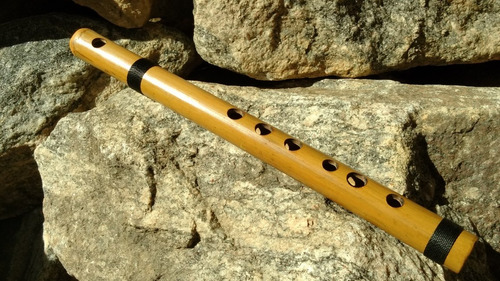
Origin: Wooden Indigenous flute of varying sizes and tuning.
Culture: adopted in North-eastern Musical Traditions for its melodic sound, specially common in the Pernambuco, and Paraíba states, played on the Forró Rhythms.
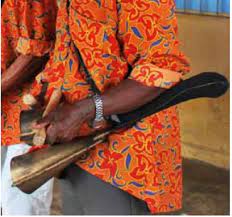
Source: UFPB University
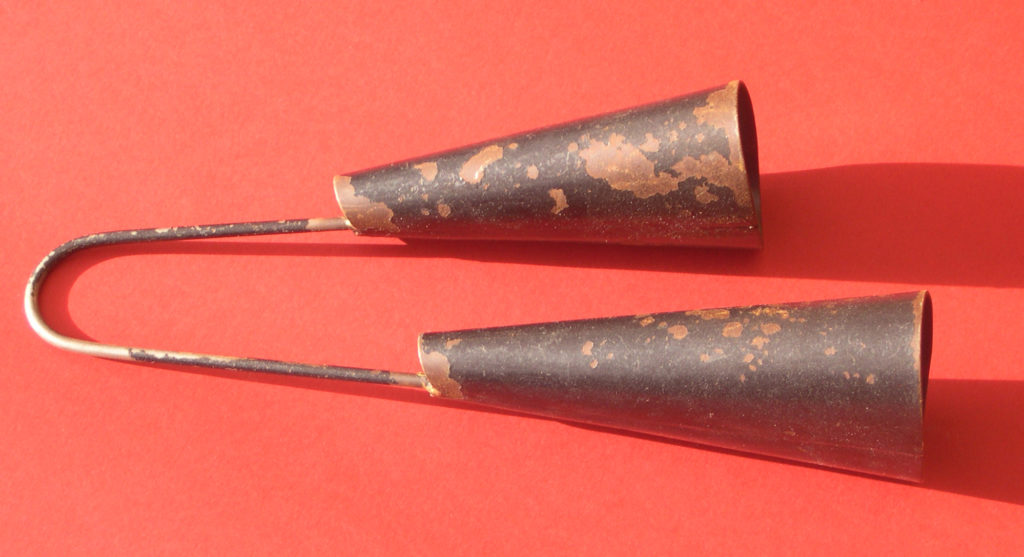
Source:Wikipedia
Construction: In the most part thought to be one of the Brazilian instruments, it is in fact of Yoruban Origin. Uses a longer and flatter single or double metal bell. Gonguê uses a longer bar and support axis used to support while playing with two sticks.
Culture: Agogô became a staple in Afro-Brazilian Culture, being used in many different traditional cultural expressions and religious communities. Gonguê is used mainly in the Maracatu groups, where it is a centerpiece of the rhythm.
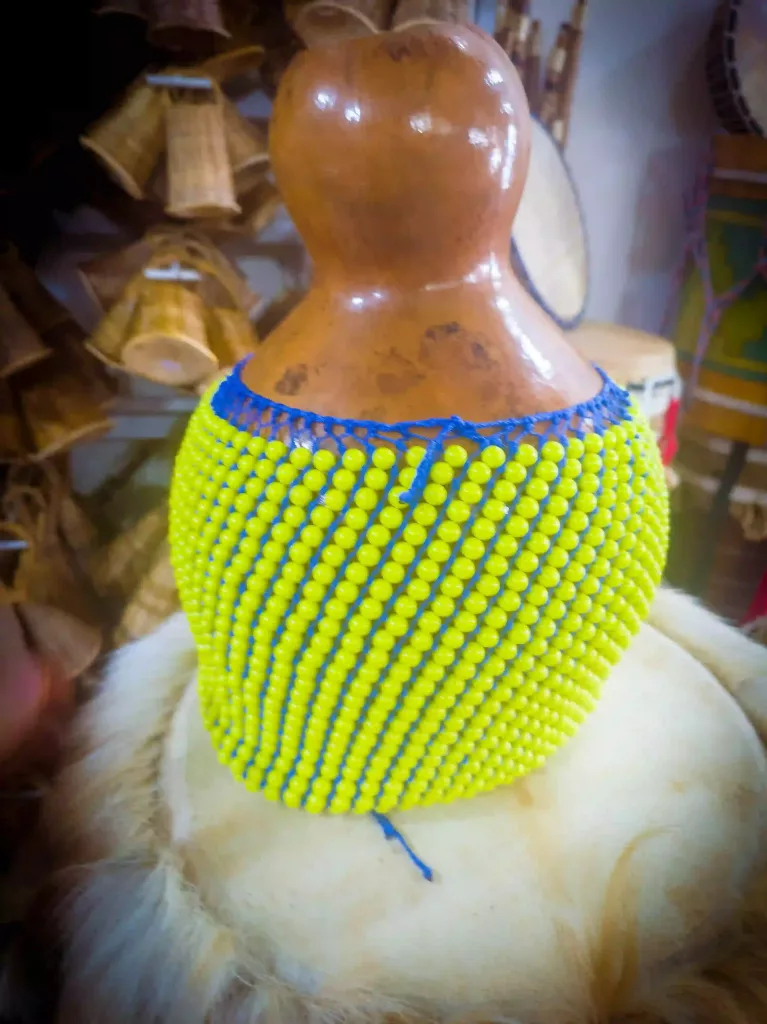
Construction: Gourd-based instrument with beads woven in braids on the gourd.
Origins: West-Africa, present in many African cultures.
Culture: Instrument very present in Traditional expressions, especially in Bahia, Recife, and Pernambuco
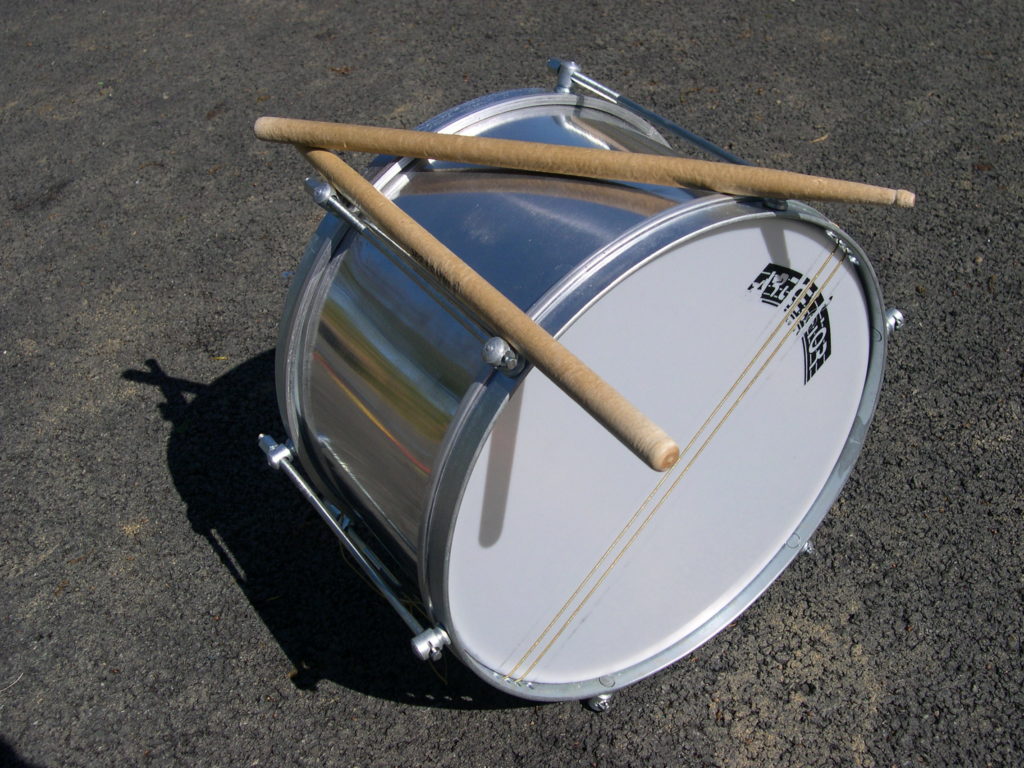
Construction: Similar to industrial drums known as Snare Drum.
Origin: European Band and marching instrument
Culture: Used in Samba’s, Maracatu, and many other expressions of different Regions, very present as fillers for many rhythms.
There are dozens more, each with its own special design, acoustics, and function within a particular tradition or aspect of Brazilian music.
It is important to note that these traditional instruments are not only important for their sounds but also being the material memory of cultural processes that have formed Brazil, from the African to Indigenous influences.
Discover everything Opanije has to offer - from immersive cultural experiences to traditional instruments.
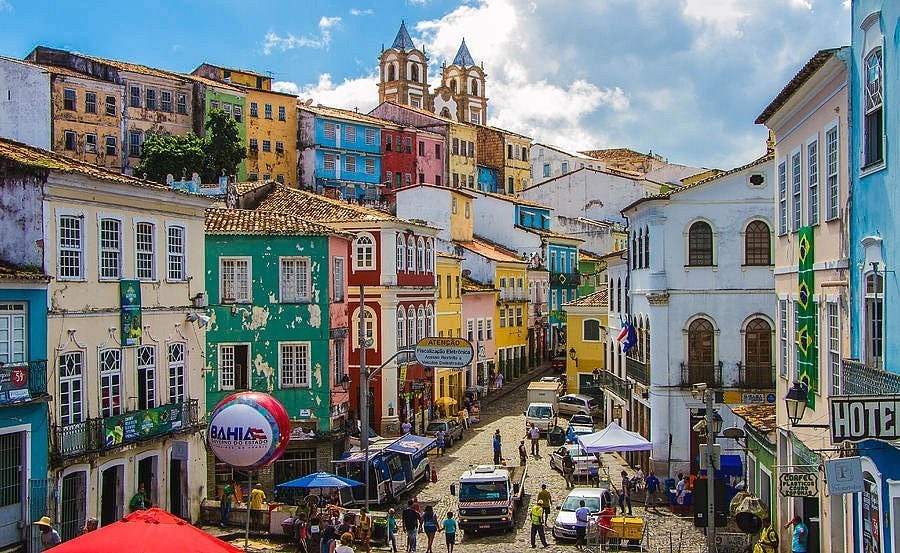
Immerse yourself in authentic Afro-Brazilian culture. Train with masters, explore Salvador, and transform your practice in 10 unforgettable days.

Learn traditional Brazilian percussion with Junior "Pai de Santo". Master Samba-Reggae, Ijexá, and other essential Bahian rhythms.

Find authentic, handcrafted atabaques and percussion instruments imported directly from master craftsmen in Salvador, Bahia.